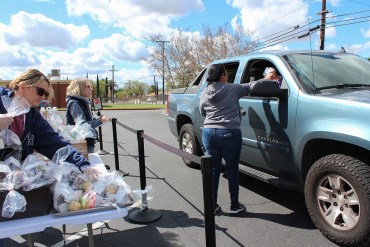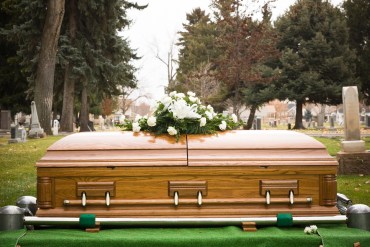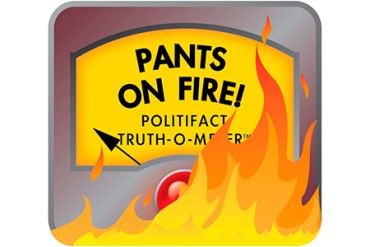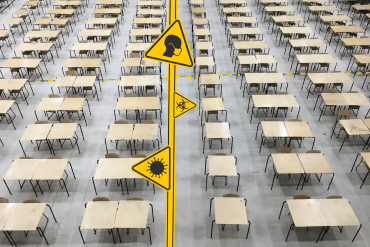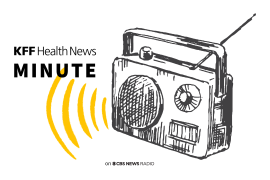Now On The Menu At Closed Schools: Drive-Thru Lunches
As schools shutter to stem the spread of the novel coronavirus, many districts are still offering free meals to their most vulnerable students. In two Southern California districts, families roll through school lunch drive-thrus to grab hot meals.
Millions Of Older Americans Live In Counties With No ICU Beds As Pandemic Intensifies
A Kaiser Health News analysis shows that counties with ICUs average one ICU bed for every 1,300 older residents, those most at risk for needing hospitalization.
Baltimore barber Antoine Dow helps bring dignity to young black men whose lives were cut short by gun violence.
Mask Shortage Straps Pharmacists Who Need Them To Keep Medicines Pure
Fifteen percent of hospital pharmacists who prepare injectable drugs are going without the protective masks they typically use or are using substitutes for masks.
Funerarias, y familias, reflexionan sobre las muertes en la era de COVID-19
Se están promoviendo los funerales en internet, tomando precauciones extra al atender los cuerpos, y pidiendo que los servicios sean breves y con pocas personas. Un luto distinto.
Gig Economy Workers Hurt By Coronavirus Eye New Federal Funds For Relief
A law signed by Trump on Wednesday will provide financial help for self-employed workers, who generally don’t have paid leave. Some states also have family and medical leave programs that can be helpful.
Was The Novel Coronavirus Really Sneaky In Its Spread To The U.S.? Experts Say No.
Public health professionals dismissed the president’s claims that the spread of the coronavirus, in particular, and the threat of a pandemic, in general, snuck up on us as being “simply astonishing” and “simply untrue.”
Funeral Homes, Families Ponder Deaths In The Age Of COVID-19
As the novel coronavirus marches across the country, it is upending how families and funeral homes honor the dead — and, ultimately, put them to rest.
A View From The Front Lines Of California’s COVID-19 Battle
California physicians dealing with COVID-19 offer a sobering portrait of a health care system bracing for the worst of a pandemic that could be months from peaking.
Take A Deep Breath: Making Risk-Based Decisions In The Coronavirus Era
There’s an array of recommendations about how to adjust our lives to reduce the spread of the novel virus. All are motivated by the same guiding principle: The better the public does in these efforts, the better off everyone will be.
Respira profundo: tomar decisiones basadas en el riesgo, en la era del coronavirus
Con el mundo respondiendo rápido a la pandemia de coronavirus, se requiere más y mejor distanciamiento social. Pero, ¿qué sigue siendo aceptable?
Amid Pandemic, Programs Struggle To Reach Vulnerable Seniors Living At Home
Older adults are at serious risk during this pandemic and have been advised to avoid contact with others. Yet many still need essential services, and programs are scrambling to adapt.
Is The Bay Area’s ‘Unprecedented’ Lockdown The First Of Many?
About 7 million people across the San Francisco Bay Area began to “shelter in place” Tuesday to limit the spread of the new coronavirus. Although public health officials acknowledged the orders were drastic, they also agreed they were necessary.
As Coronavirus Testing Gears Up, Specialized Swabs Running Out
Nationwide, testing for coronavirus is ramping up. But the supply of specialty swabs needed to collect potential coronavirus specimens can’t keep up with demand, creating a bottleneck in testing capabilities. So two top manufacturers are working with U.S. and Italian governments to increase production.
Near Trump’s Florida Home, Drive-Thru COVID-19 Testing Gets Off To Rocky Start
Just 5 miles from Mar-a-Lago, the POTUS’ outpost, Florida residents find that the president’s pledge to make testing accessible hasn’t materialized.
Cerca de la casa de Trump, las pruebas de COVID-19 al paso tuvieron un comienzo difícil
A pesar de las reiteradas afirmaciones de la Casa Blanca de que las pruebas estarán disponibles para todos, para los residentes de West Palm Beach, la realidad fue muy diferente.
Qué significa la “limpieza profunda” para tener barcos, aviones y casas libres de virus
La limpieza profunda no es un concepto científico y, aunque hay guías oficiales, puede significar algo distinto para una empresa que para un consumidor.
Lo que los padres deben saber sobre la difícil decisión de cerrar escuelas
Los cierres son parte de una estrategia amplia para limitar las interacciones públicas y frenar la propagación de COVID-19. Pero la decisión está lejos de ser fácil, y es controversial.
In Face Of Coronavirus, Many Hospitals Cancel On-Site Training For Nursing And Med Students
Hospitals and nursing homes say they are acting to protect students and patients, but nursing educators worry the pipeline of new nurses could be slowed at a time when they may be needed most. Some doctors in training have also seen their clinical rotations canceled.
Many Schools Have Closed ― But Not All. What Parents Need To Know About That Tough Call.
Closing K-12 schools is part of a broad strategy to limit public interactions and slow the spread of COVID-19 cases. But the decision is far from easy, with conflicting science about how effective such closures are weighed against the massive disruption to families’ lives.




